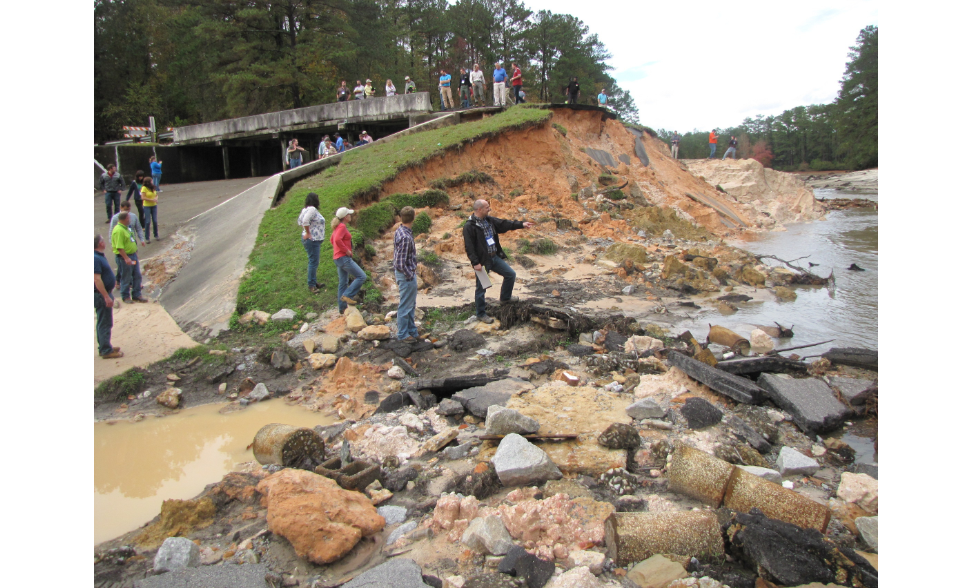Start Date
4-30-2025 10:45 AM
Description
Time-dependent prediction of rock scour for dams and spillways has largely remained elusive given limited available data on rock erosion rate parameters in literature. Recently, a theoretical framework for determining the rate of rock scour was developed by Annandale (2025), enhancing the Erodibility Index Method (EIM). The EIM is the most commonly used and accepted approach for evaluation of scour in rock for dam applications. This theoretical framework has been incorporated into the 2D probabilistic jet impingement scour model (George & Annandale, 2023) so that scour progression due to head-cutting in a spillway channel (lined or unlined) or overtopping onto a dam foundation can now be simulated over the duration of a flood hydrograph. Currently, back-analysis of observed scour due to prior flood events is needed to calibrate a rock-specific erosion rate coefficient. Prediction of rock erosion rates allows for greatly improved decision making when considering the impacts of scour on civil structures.
Included in
2D Probabilistic Scour Model for Predicting the Time-Rate of Scour for Spillways and Overtopping Dams Based on the Erodibility Index Method
Time-dependent prediction of rock scour for dams and spillways has largely remained elusive given limited available data on rock erosion rate parameters in literature. Recently, a theoretical framework for determining the rate of rock scour was developed by Annandale (2025), enhancing the Erodibility Index Method (EIM). The EIM is the most commonly used and accepted approach for evaluation of scour in rock for dam applications. This theoretical framework has been incorporated into the 2D probabilistic jet impingement scour model (George & Annandale, 2023) so that scour progression due to head-cutting in a spillway channel (lined or unlined) or overtopping onto a dam foundation can now be simulated over the duration of a flood hydrograph. Currently, back-analysis of observed scour due to prior flood events is needed to calibrate a rock-specific erosion rate coefficient. Prediction of rock erosion rates allows for greatly improved decision making when considering the impacts of scour on civil structures.


